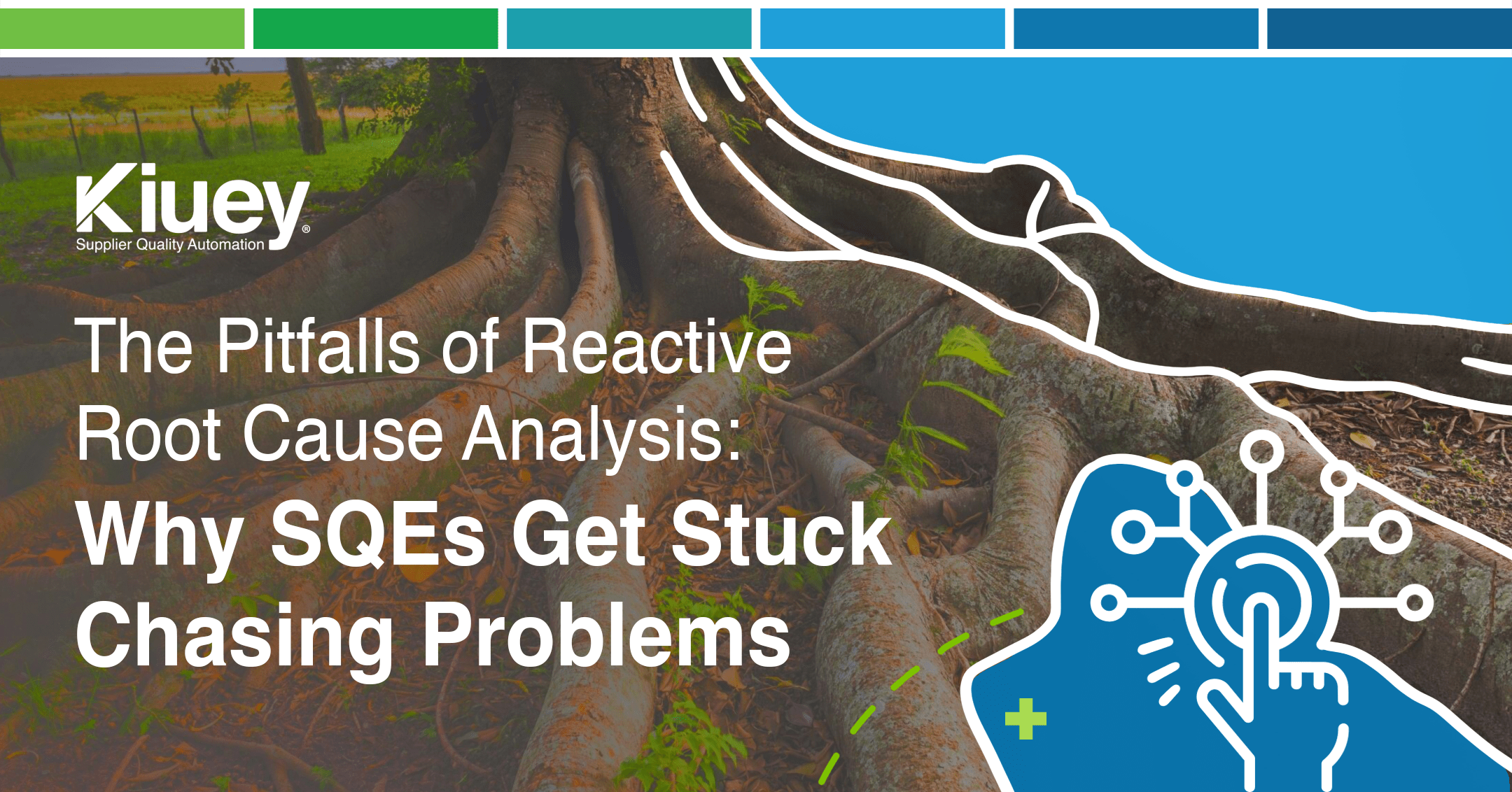
May 22, 2024
Just like a detective wouldn’t start solving a crime without understanding the scene, a Supplier Quality Engineer (SQE) can’t effectively address issues related to the PPAP process without proper root cause analysis.
Here, we’ll explore the common pitfalls that lead SQEs down the path of reactive troubleshooting, hindering proactive problem-solving.
Diagnosing the Problem: Beyond the Band-Aid
Many SQEs fall into the trap of “firefighting,” jumping straight into fixing the immediate problem without digging deeper. This reactive approach might offer a temporary solution, but it often leaves the root cause unaddressed, leading to recurring issues and wasted resources.
A classic example, which can illustrate a little bit, is the “blame game” that erupts after a critical issue is discovered within a product or part.
Fingers get pointed everywhere. Everyone’s guilty until the opposite is proven. Maybe you have even lived a situation like this, ain’t it?
However, even if the path eventually outlines who or where the problem was originated, the underlying cause, like insufficient reviews, remains unexamined.
The Peril of Incomplete Information
Another pitfall is relying on incomplete data for root cause analysis. This can manifest in several ways, such as limited test coverage, focusing solely on areas with recent issues creates a blind spot, neglecting potential issues lurking elsewhere or either inconsistencies in reports, which can make it difficult to identify trends and patterns that might point to the root cause.
These data gaps can lead SQEs down rabbit holes, wasting time investigating peripheral symptoms rather than the core issue.
The Road from Root Cause to Proactive Problem Solving
Shifting from reactive firefighting to proactive problem-solving requires a change in mindset and approach. Here’s how SQEs can navigate away from the pitfalls:
- Shift Left: Implement preventative measures in early stages of the process to identify potential issues before they become full-blown issues.
- Embrace Metrics: Go deep enough to identify areas requiring improvement and prioritize root cause investigations.
- Invest in Collaboration: Foster open communication across every team to ensure a complete picture of the system and its behavior.
By adopting a proactive approach, SQEs can transition from chasing problems to preventing them entirely, ultimately leading to higher quality part or product and a more efficient development process.
Let's talk to see how PPAP Manager can help your company to save time and money.


